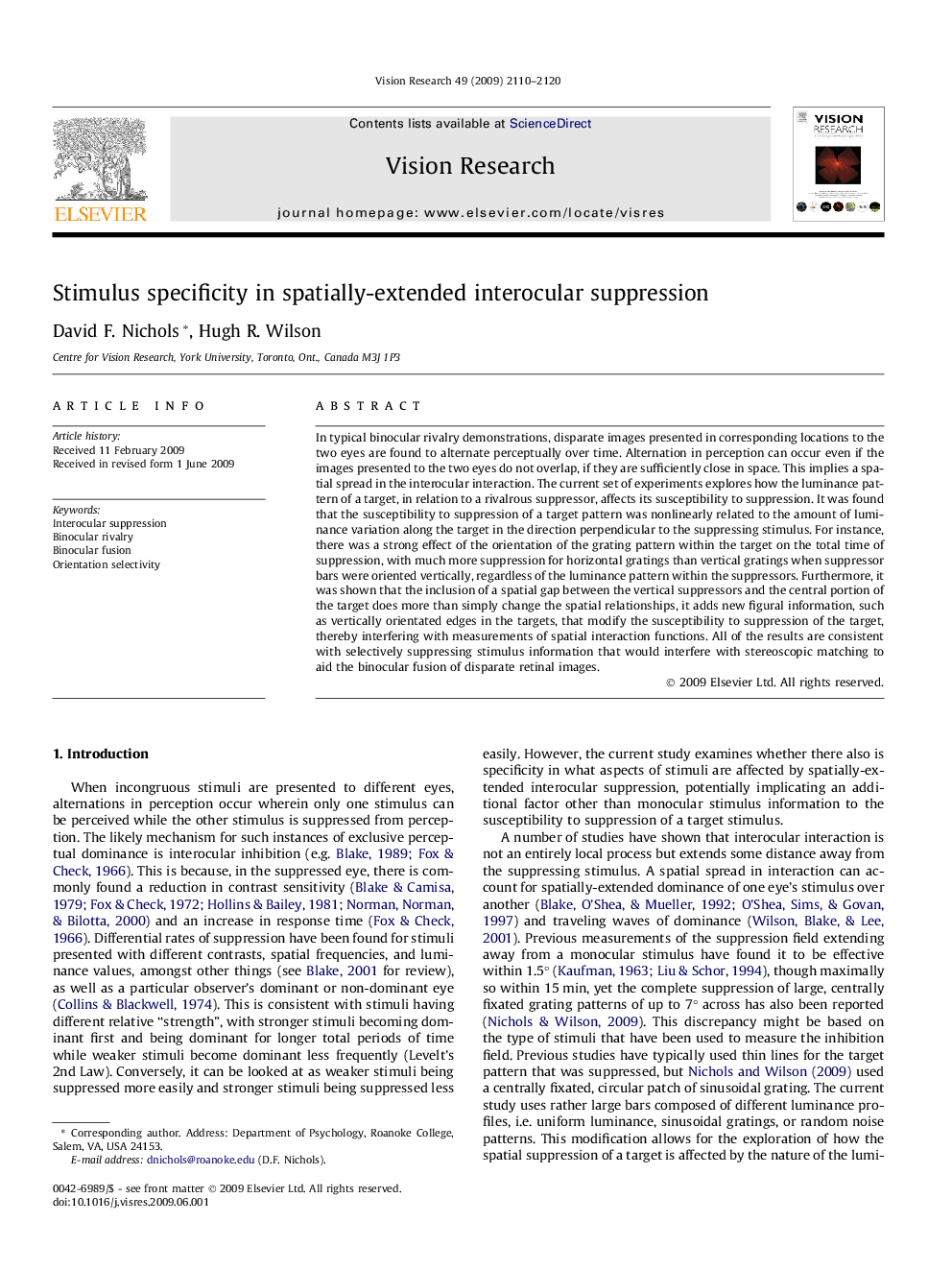| Article ID | Journal | Published Year | Pages | File Type |
|---|---|---|---|---|
| 4034756 | Vision Research | 2009 | 11 Pages |
In typical binocular rivalry demonstrations, disparate images presented in corresponding locations to the two eyes are found to alternate perceptually over time. Alternation in perception can occur even if the images presented to the two eyes do not overlap, if they are sufficiently close in space. This implies a spatial spread in the interocular interaction. The current set of experiments explores how the luminance pattern of a target, in relation to a rivalrous suppressor, affects its susceptibility to suppression. It was found that the susceptibility to suppression of a target pattern was nonlinearly related to the amount of luminance variation along the target in the direction perpendicular to the suppressing stimulus. For instance, there was a strong effect of the orientation of the grating pattern within the target on the total time of suppression, with much more suppression for horizontal gratings than vertical gratings when suppressor bars were oriented vertically, regardless of the luminance pattern within the suppressors. Furthermore, it was shown that the inclusion of a spatial gap between the vertical suppressors and the central portion of the target does more than simply change the spatial relationships, it adds new figural information, such as vertically orientated edges in the targets, that modify the susceptibility to suppression of the target, thereby interfering with measurements of spatial interaction functions. All of the results are consistent with selectively suppressing stimulus information that would interfere with stereoscopic matching to aid the binocular fusion of disparate retinal images.
